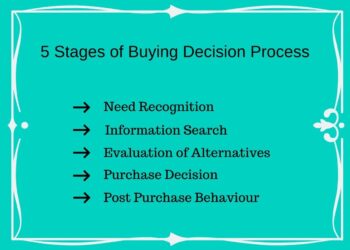Before knowing about Marketing Mix, let us learn what is Marketing?
Marketing refers to the activities of an organization related to buying and selling the products or services. It includes advertising, selling, and delivering products to people.
People who work in marketing departments of companies try to get the attention of target audiences by using logos, attractive designs, brand promotions with celebrities, and getting media exposure through video ads and many more…
Meaning of Marketing Mix
A combination of factors that are used for marketing by a company to encourage consumers to buy their products, commonly termed as 4Ps: product, price, place, and promotion.
These four elements are adjusted to find the right combination that meets the needs of customers while generating optimal income for the company.
The 7Ps of Marketing Mix
The Marketing Mix elements include 7Ps namely
- Product
- Price
- Place
- Promotion
- People
- Process and
- Physical Evidence
These 7Ps are divided into 2 parts such as traditional and modern Ps, because before there were only 4Ps Product, Price, Place, and Promotion.
Later in the modern era due to the rise in demand for services additional 3Ps were added People, Process, and Physical Evidence.
Here is an example video showing the Marketing Mix with an example of 7Ps of Coca Cola Company how they adopted in their business and achieved success.
Traditional 4Ps of Marketing Mix With Examples
1. Product
In the marketing mix, the product or service is the most important without which the marketing concept itself does not exist.
Customers acquire products for a singular reason that they’re perceived because the means that to satisfy their wants and needs.
According to Philip Kotler, “A product is anything that can be offered to a market for attention, acquisition, use or consumption that might satisfy a need or want.”
In effect, according to this definition, products include physical products, services, persons, places, organizations, and ideas.
Products have various attributes such as quality, variety, design, brand, packaging, services, and warranties that can be changed depending on what the specific market wants.
For example, when consumers wanted Tata Indigo Marina, it was an updated version of Tata Indigo.
2. Price
The second factor is the price, which impacts the volume of sales. It is a price that will obtain a quantity, weight or specific measurement of a product.
For example, you buy a packet of chips which is net 10 grams in weight, for this value ’10’ denotes the price of the product.
The price is the only marketing mix element that can be changed quickly. Price straight away influences the development of marketing strategy as it is the main factor that influences the assessment of importance obtained by customers. Firms have to take some factors while fixing the price of a product.
These factors are:
- Objectives of business
· The competitive environment
· Product and promotional policies of the firm
· Nature of price sensitivity
· Conflicting interest between manufacturer and intermediaries
· Routine pricing decisions
· Active entry of non-business groups in pricing decisions
3. Place
The place is an important factor of a marketing mix, which covers the various activities the company tries to reach the specific categorized customers by their products availability.
Place mix deals with the physical distribution of products to the destination at the right time and right place.
For example, a customer usually purchases toiletries from nearby retail stores. So, toiletry marketers must ensure that their products are available at almost every nook and corner store.
Distribution channels may also be used in a marketing strategy to differentiate a product from its competitors.
For example, Amway distributes its products using a direct distribution channel while HUL uses multi-channel distribution (through retailers, wholesalers, online sources, etc.).
A company uses distribution channels like retailers, wholesalers, merchants, brokers, and
value-added resellers. The management also aims to keep the physical distribution costs (inventory, transportation, and storage) as low as possible.
4. Promotion
This method helps to communicate the features and benefits of the products or services to its target customers. Some commonly used methods such as advertising, sales promotion, direct selling, public relations, direct marketing, etc.
For example, Toyota promotes its brands by advertising, sales promotions, public relations, sponsorship, etc.
The promotion is a key element of any marketing activity used to positively influence the perceptions of the target customers in order to facilitate exchanges between the seller and the customer.
Additional 3Ps of Marketing Mix With Examples
The traditional method of 4Ps was not enough to market services. After considering the rapidly increasing role of services in the economy and customer-orientation, additional 3Ps were added to the marketing mix to serve the purpose of marketing services.
People, Process, and Physical evidence are additional 3Ps. They play a greater role in the marketing of services than in the marketing of products.
1. People
This is a vital element of the modern marketing mix or the service mix. Having appropriate staff and people are an essential part of any service provider.
Recruiting the right employees and giving training for them appropriately to deliver their services are very essential if an organization wants a competitive advantage.
Consumers make judgments and deliver perceptions of the service based on the behavior and performance of employees how they react with them.
Therefore, the service staff should have the appropriate interpersonal skills, aptitude, and service knowledge to provide the service to meet the consumer expectation for the money they are paying for.
2. Process
This refers to the step by step way to the delivering service to the end customer.
For example, when you go to McDonald’s drive-through, you are first greeted by an attendant who asks you for your order.
Then, a person notes down your order and informs a crew member about it. Within the time you pay your bill, your order reaches you. You take your order and leave. This represents a service delivery process.
The service process can be automatized as well. For example, in movie theaters, they have introduced an online ticket booking facility and ticket counter to offer convenience to customers and also reduce the human element in the service delivery process.
3. Physical evidence
Physical evidence is the tangible part of a service. The satisfaction of customer service is an unknown factor, as they cannot rate a particular service until it is consumed.
Therefore, service providers should try to offer services with the element of tangibility.
Physical evidence can include web pages, paperwork (such as invoices, tickets, and dispatch notes), brochures, furnishings, ambiance, signage (such as those on aircraft and retail stores), brand logos, the uniform of employees, business cards, and the building itself.
Importance of Marketing Mix
- It helps us in identifying the opportunities and helps in product development.
- It acts as a guide for any business to take up decisions and strategies.
- It makes the organization to differentiate with their competitors.
- It gives the proper direction how a product or service to be reached, final user.
Finally, Marketing mix elements help to benefit both the consumers and organization, whereas consumers get quality products or services with less price as well as the organization with make more sales and earn a profit with the margin.
[ Also checkout: Economic Planning in India ]












